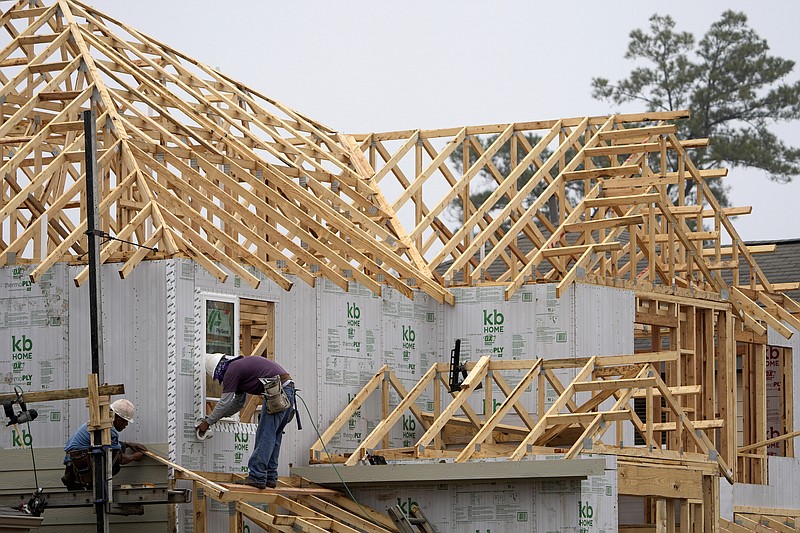WASHINGTON -- U.S. construction spending rose a modest 0.2% in April as strength in housing offset further weakness in nonresidential construction.
The April increase followed a much stronger 1% gain in March which was revised up from an initial estimate of a slight 0.2% advance. The April increase pushed construction to a seasonally adjusted annual rate of $1.52 trillion in April, 9.8% higher than a year ago, the Commerce Department reported Tuesday.
Through the first four months of this year, construction activity is 5.8% higher than the same period in 2020.
Home building, a standout performer over the past year, rose 1% in April and is now 29.7% higher than a year ago, underscoring how strong home construction has been in the past year. Construction of single-family homes was up 1.3% in April and apartment construction rose 1.9%.
After a prolonged period of anemic sales since the housing bust, home builders now risk losing business because they can't supply enough inventory. Home prices have shot up 11.3% over the past year, according to CoreLogic, keeping many people out of the market.
At the same time, the cost of labor and raw materials -- in particular the cost of lumber, which has more than doubled over the past year -- is spiraling upward, pushing prices higher still.
Just as notable as the level of new construction is where it is taking place. From the mountains of central Pennsylvania to the one-stoplight towns beyond Houston's endless expanse to California's San Joaquin Valley, developers are racing to build homes in areas that buyers used to judge beyond the outer limits of an acceptable commute.
With many people moving away from the urban core because of the pandemic, new-home construction in small cities and suburban areas rose 15% over the past year, compared with less than 10% in big cities, according to data from the National Association of Home Builders. "People can move to where it's more affordable," said John Burns, chief executive officer of John Burns Real Estate Consulting. "This is a permanent game-changer in the housing market."
U.S. builders are on a pace to start construction on 1.1 million single-family homes this year, the most since 2006. That is still well below the 2005 peak of 1.7 million homes, but double the sub-500,000 rate in the aftermath of the crash.
According to Tuesday's Commerce Department report, nonresidential construction fell 0.5% in April and is 4.8% below the level of a year ago. With the lockdowns over the past year, developers have struggled with cancellations of commercial projects as businesses had more employees work from home. That is a trend many see continuing, reducing the need for more office space.
Spending on government building projects fell 0.6% in April and is down 2.2% from a year ago, reflecting the construction cutbacks many states and localities have done as tax revenue fell during the pandemic-induced recession. In April, highway construction was up 0.6% from March but down 2.7% from a year ago.
"Overall, nonresidential and public construction spending remain depressed, but building activity activity in the residential sector should remain well-supported by low inventories and still-strong demand," said Rubeela Farooqi, chief U.S. economist at High Frequency Economics.
Information for this article was contributed by Martin Crutsinger of The Associated Press and by Conor Dougherty and Ben Casselman of The New York Times.


